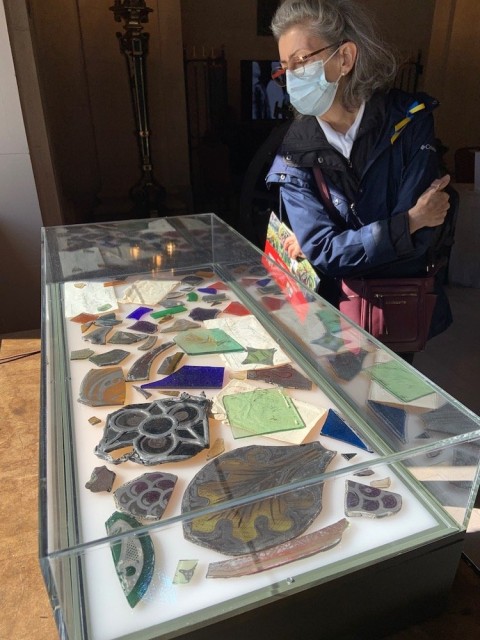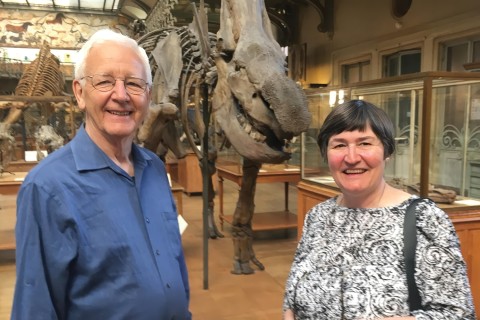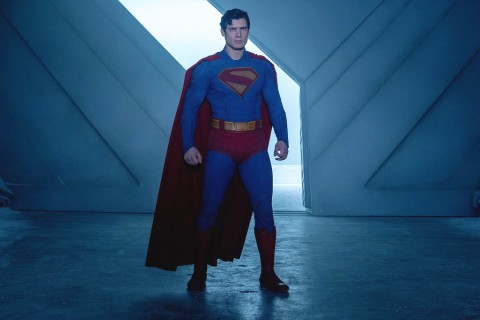WWII bombed churches and synagogues live on in art glass exhibit

The man in the trenchcoat stood in the ruined church, gazing down at a fallen crucifix, its life-sized image of Jesus broken, bashed and half-covered in rubble.
Nearby, a statue of the Virgin Mary, somehow still erect after intense bombing, looked down with the man, her eyes seemingly full of sorrow.
It was 1945, and the man—US Army Chaplain Frederick A. McDonald—then performed what had become a kind of coping ritual. He reached down among the debris and retrieved a handful of colored glass, slipped it into an envelope he carried just for the purpose, and marked it with the name of the church and its location—Liebfrauenkirche in Trier, Germany.



